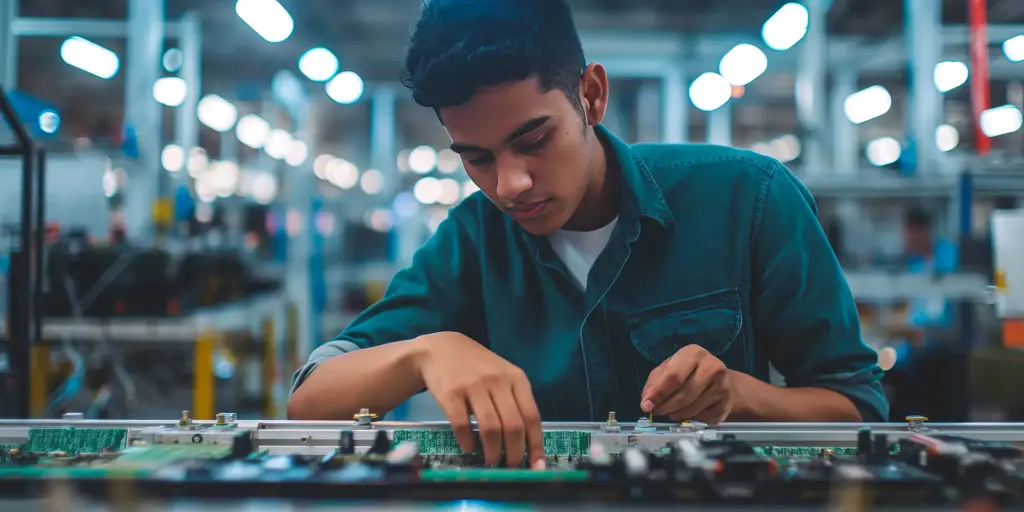As trade dynamics shift, a new era of innovation is emerging, one where adaptable supply chains and reimagined business models don’t just lower costs, they unlock meaningful progress on sustainability.
With frictionless global trade becoming less reliable, tariffs and trade barriers are forcing companies to rethink how they design, manufacture and deliver products. While at first glance, these changes may seem like a hindrance, they present a unique opportunity to align commercial goals with sustainability initiatives.
At 42T, we’ve identified two powerful strategies that businesses can adopt to thrive in this evolving environment and seize the chance to build a leaner, greener future.
1. Localise your supply chain with last-mile completion
One of the most promising approaches is to reengineer supply chains around last-mile product completion. Instead of finalising products entirely overseas and shipping them in finished form, companies can pivot to producing core components in bulk at centralised manufacturing hubs and then completing the final touches closer to the target markets.
Why does this matter?
- Late customisation creates scale and flexibility: Manufacturing the core product in large volumes leverages traditional economies of scale, while local facilities can add region-specific customisations, such as flavour variants, labelling or packaging, tailored to market needs.
- Reduced transport costs and carbon footprint: Part-finished goods are often more compact and lighter than fully packaged products, resulting in lower shipping costs and a significant reduction in associated emissions.
- Greater supply chain responsiveness: Local finishing centres enable quicker reactions to changes in promotions, regulations or customer preferences, minimising excess inventory and waste.
- Local packaging and circular economy participation: By sourcing packaging materials domestically, brands can integrate more easily into local recycling ecosystems, reducing landfill waste and improving circularity scores.
- Improved shelf-life management: Products finalised closer to the consumer need shorter shelf lives, opening the door to using more sustainable, lower-barrier packaging options that might not have been feasible for long-haul shipping.
- Tariff reduction through value addition: Adding substantial value to a product after it crosses a border can reduce the tariff burden, since duties are often assessed on the base product rather than the final retail-ready item.
By embedding last-mile completion into your operations, you not only protect your margins against rising tariffs, you also create a nimbler, more sustainable brand that’s better equipped for the future.
2. Rethinking your business model for resilience and circularity
Beyond logistics, this period of change is a prime opportunity to reimagine the entire business model. Here are a few transformative ideas:
- Sell refills instead of full products: Providing a durable, high-quality container (such as a beautifully designed bottle or device) and then selling lightweight refills or concentrates not only reduces shipping volume and carbon impact, but also keeps customers engaged longer-term.
- Design for assembly, disassembly and local personalisation: Products built with modularity in mind allow components to be easily separated, repaired or recycled locally. Even better, brands can empower users to personalise their products with simple, locally manufactured parts, creating a tighter bond between brand and community.
- Shift to “product-as-a-service”: Instead of simply selling goods, companies can offer ongoing services that retain ownership of the product (think leasing, maintenance, upgrades). This model captures more lifetime customer value, deepens customer relationships and avoids goods being classified as imported ‘products’, reducing tariff exposure.
Each of these models not only offers a way to mitigate the commercial risks of rising tariffs but also builds stronger relationships with customers while reducing environmental impact.
Seizing the opportunity – Turning pressure into progress
Tariffs may be a policy lever, but for innovative businesses, they’re also a signal to reassess where goods are made and how value is delivered. The most agile companies will use this moment to strengthen resilience, sharpen market responsiveness and embed sustainability into the foundations of their operating models.
Now is the time to look beyond compliance and cost-cutting and ask: where can local flexibility, modular design or circular practices unlock both margin and meaning?
At 42T, we work with businesses to turn these strategies into real-world results. If you’d like to explore where your biggest opportunities may lie, or see how others are already adapting, download our Consumer Sustainability 2025 Report.

